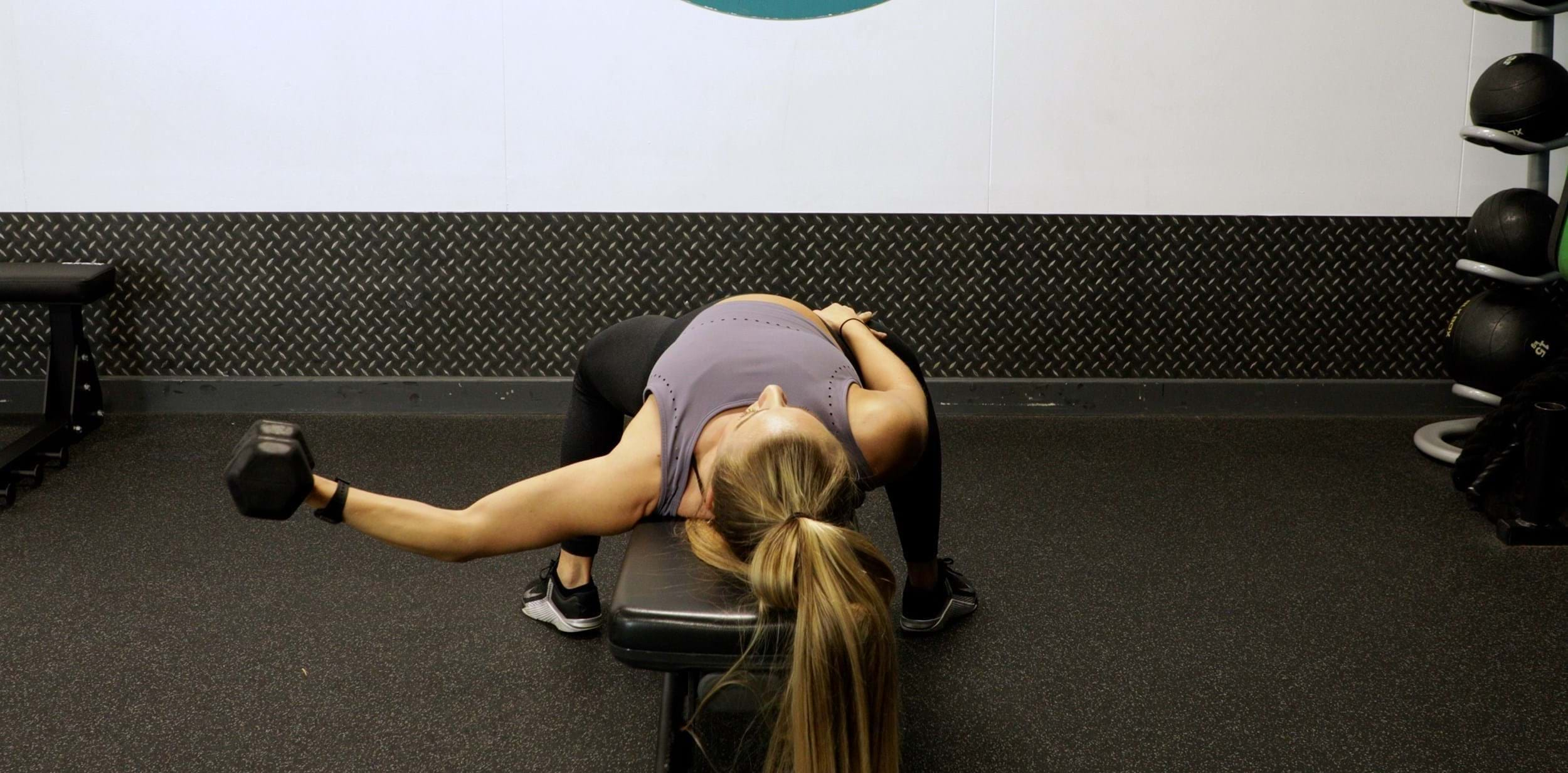Single Arm Dumbbell Fly
What Is A Single Arm Dumbbell Fly?

The single arm dumbbell fly is a unilateral variation of the dumbbell chest fly. Chest flyes use adduction to work the pectorals, with support from the deltoids and triceps. The single arm dumbbell fly requires the performer to lower the dumbbells in an arc motion until they're in line with the chest. The stretched position at the bottom of the movement is the most challenging, requiring pec contraction to push the dumbbells back to the starting position.
Unilateral training can be easily overlooked when it comes to chest training, as many of the popular movements such as bench press trains the body bilaterally. Performing this move one arm at a time allows muscular imbalances to be identified and minimised, reducing injury risk while contributing to overall strength.
Check out some other chest fly variations: machine flyes, cable flyes, seated cable flyes, dumbbell chest flyes, incline dumbbell chest flyes
Commonly Asked Questions On Single Arm Dumbbell Fly
Dumbbell flyes work the pectoral muscles, with the anterior deltoids, triceps, and core also engaged to stabilise the lift. Single dumbbell flyes can help to build mind muscle connection as the focus is on one side at a time.
Single arm flyes are a good dumbbell chest fly variation that challenge the body unilaterally, minimising muscular imbalances and building overall strength to reduce the risk of injury.
All fly variations, are exercises worth including in your train routine. While they are unlikely to challenge the pectorals to their full capability as they cannot be loaded as heavy as pressing movements, the fly is helpful in achieving a greater pec stretch. Flyes build muscle, improve chest flexibility, and help with scapular retraction.
Incorporating flyes into chest and upper body workouts also adds variation to your workouts which can keep you engaged in your training.
Single Arm Dumbbell Fly Tips
The single arm dumbbell fly requires greater stability and core engagement than the bilateral dumbbell fly to keep the torso in place when the dumbbell is lowered.
Ensuring control is important while performing all flyes, and the single arm version is no exception. Moving the load in a slow, controlled manner ensures the work is carried out by the intended side and reduces risk. If you find you need momentum to push the weight or are struggling to lower the dumbbell with control, lighten the load.
How To Do Single Arm Dumbbell Fly
Lie on your back on a flat bench holding a dumbbell in one hand, feet flat on the floor. Ensure the feet remain planted on the ground and your head and back are in contact with the bench throughout.
Extend the arm to press the dumbbell up in line with your chest, keeping a soft bend in the elbow.
Hold your non-working arm out to the side, or rest on your chest, to help keep your torso stable.
Take a deep breath as you slowly lower the dumbbell in an arc direction, until the arm is almost parallel to the ground and the dumbbell is in line with your chest.
As you breathe out, squeeze the chest muscles and push the dumbbell back in arc direction until it reaches above the chest.
If you’re not sure if any of the above exercises are suitable for you, please consult your doctor before you start it. Need guidance on how to perform the exercise? Ask a personal trainer at your gym.